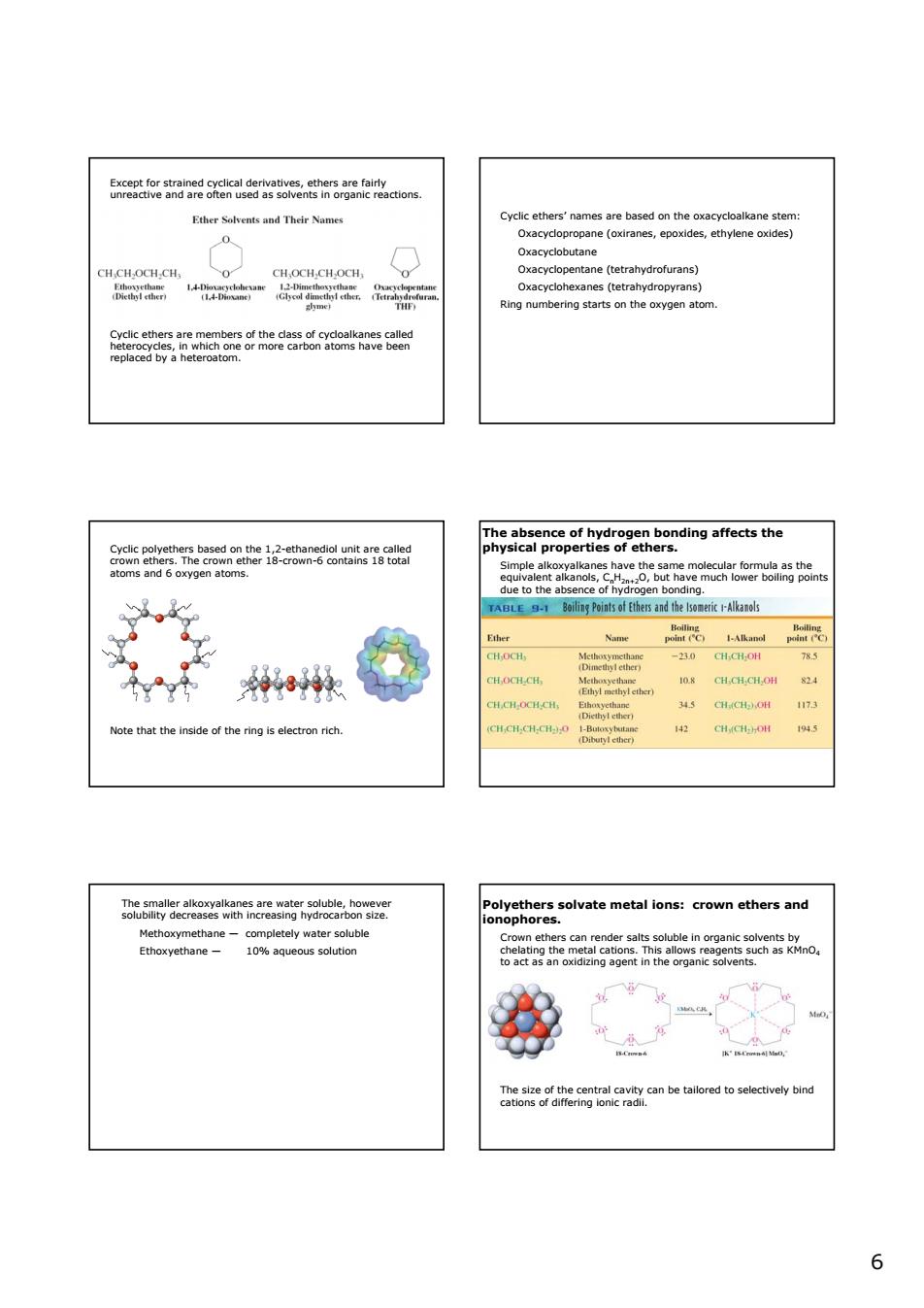正在加载图片...

feptfctangSSkagaonte8nenfenctions Ether Solvents and Their Name 0ayoprepne(odranes,spodes,ihyieneodes C6efieeeoee6en6oir8oe ing ffetthe -230 CH CHOH 75 9 HOCH.CH. 10.8 CH.CH.CH.OH 824 ote that the insde of CH. metal ions:crown ther and 6 6 Except for strained cyclical derivatives, ethers are fairly unreactive and are often used as solvents in organic reactions. Cyclic ethers are members of the class of cycloalkanes called heterocycles, in which one or more carbon atoms have been replaced by a heteroatom. Cyclic ethers’ names are based on the oxacycloalkane stem: Oxacyclopropane (oxiranes, epoxides, ethylene oxides) Oxacyclobutane Oxacyclopentane (tetrahydrofurans) Oxacyclohexanes (tetrahydropyrans) Ring numbering starts on the oxygen atom. Cyclic polyethers based on the 1,2-ethanediol unit are called crown ethers. The crown ether 18-crown-6 contains 18 total atoms and 6 oxygen atoms. Note that the inside of the ring is electron rich. The absence of hydrogen bonding affects the physical properties of ethers. Simple alkoxyalkanes have the same molecular formula as the equivalent alkanols, CnH2n+2O, but have much lower boiling points due to the absence of hydrogen bonding. The smaller alkoxyalkanes are water soluble, however solubility decreases with increasing hydrocarbon size. Methoxymethane — completely water soluble Ethoxyethane — 10% aqueous solution Polyethers solvate metal ions: crown ethers and ionophores. Crown ethers can render salts soluble in organic solvents by chelating the metal cations. This allows reagents such as KMnO4 to act as an oxidizing agent in the organic solvents. The size of the central cavity can be tailored to selectively bind cations of differing ionic radii